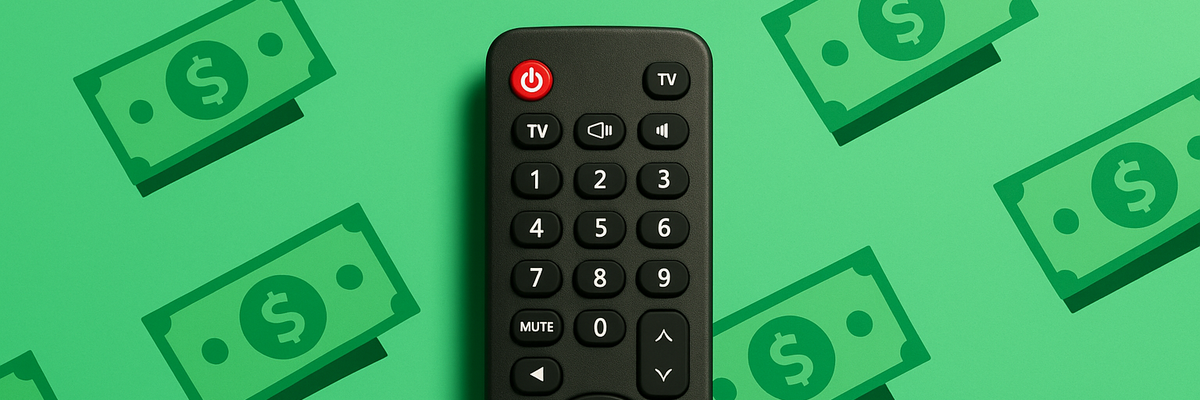What if You Invested Every Dollar You Spent on Subscriptions?

A recent survey by CNET found that the average person pays about $90 per month on subscriptions. That's about $1,080 per year going into things like streaming, meal kits, fitness apps, and mystery boxes.
Now, I'm not here to knock subscriptions. I've got a few myself. But just imagine for a second… What if you saved and invested that money instead?
How much you could save
Let's say you take the average $90 per month and stick it in a brokerage account.
If you invested in low-cost index funds that earned a conservative 8% annually, here's what that money would grow to over time:
| Time Invested | Future Value |
|---|---|
| 10 years | $15,645 |
| 20 years | $49,423 |
| 30 years | $122,345 |
| 40 years | $279,781 |
| 50 years | $619,671 |
Even if you trimmed just half your subscriptions and invested $45/month, you could add over $61,000 to your retirement savings over 30 years.
How to cancel the stuff you don't use
My parents lived without subscriptions. They had rabbit-ear TVs, weekly meal plans, and the occasional newspaper.
Now, I'm not suggesting we should become tech-averse hermits and live like it's the '80s. But even cutting back on a few small subscriptions might add up to a lot.
In fact, CNET's survey already found that the average person pays $17 per month for subscriptions they don't even use. That's just wasted money, plain and simple.
Here are a few tips for your subscription audit:
- Check your statements. Look back through three to six months' worth of credit card statements and take a tally of what you signed up for.
- Look for duplicates. Do you really need Netflix, Hulu, and Max?
- Cut trial leftovers. Free trials that quietly turned into charges are low-hanging fruit to be cut.
- Eliminate underused apps. If you haven't opened it in three months, cancel it.
- Pause seasonal or temporary services. Subscription snack boxes, streaming sports, etc. Try putting them on hold or temporarily canceling while not in use.
- Review app store charges. Sneaky monthly fees often hide in your iOS or Android settings.
Once you free up that cash, you'll want to put it to work -- not let it sit idle.
If you're a beginner investor still learning the ropes, a robo-advisor like SoFi® can help you invest automatically -- without having to pick stocks or time the market.
Check out SoFi Robo Investing to get started. It's a low-cost option, with only a $50 account minimum to open.
Where to invest your "found money"
Let's say you trimmed $50 a month in unused subs. That's $600 a year you can now invest.
A few solid options to stash all that money are:
- High-yield savings account. Great for saving up an emergency fund if you don't have one already.
- Roth or traditional IRA. These are tax-advantaged accounts, perfect for growing your retirement nest egg.
- Brokerage account. While there are no tax benefits, they have no limits and super flexible investment options.
A good friend of mine opened an IRA about five years ago during the COVID lockdowns. She started investing just $200 a month, and earlier this year, her account crossed $15,000!
Don't underestimate what a few canceled subscriptions can do when you invest the savings instead. It adds up way faster than you think.
Can you live without subscriptions?
Cutting every subscription probably isn't realistic. Especially since every business is turning to subscription models these days.
But finding a few to ditch here and there? Totally doable. And the money you save could quietly turn into thousands down the line if you put it to work.
If you're not sure where to start, a robo-advisor can invest automatically for you -- no stock picking required. Check out this list of our favorite robo-advisors to begin.
Our Research Expert
We're firm believers in the Golden Rule, which is why editorial opinions are ours alone and have not been previously reviewed, approved, or endorsed by included advertisers. Motley Fool Money does not cover all offers on the market. Motley Fool Money is 100% owned and operated by The Motley Fool. Our knowledgeable team of personal finance editors and analysts are employed by The Motley Fool and held to the same set of publishing standards and editorial integrity while maintaining professional separation from the analysts and editors on other Motley Fool brands. Terms may apply to offers listed on this page.


